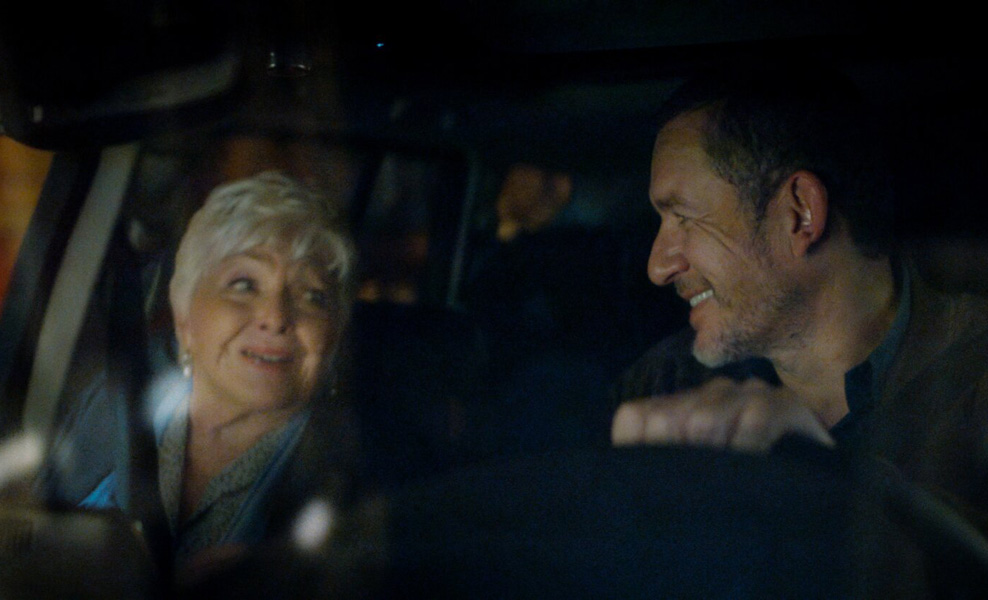Being able to spend time in a movie theater this last week has warmed Christian Carion’s heart when usually he’s been the one responsible for that effect on other people. A retrospective of his work at the Quad Cinema in New York has allowed for a trip down memory lane as films such as his World War I drama “Joyeux Noel” brought him back in touch with star Diane Kruger for a Q & A — “We didn’t see each other for a long time, so we were like old soldiers,” he laughs — and as his searing Guillaume Canet/Melanie Laurent mystery “My Son” relaunched the post-film discussions it did upon its release in 2017.
“To talk about cinema and to see a lot of people in theaters, I love this and I always tell to them you have to come back to theaters,” says Carion. “This is the church. This is where the heart of cinema is beating — not on your sofa with Netflix. Come back to theaters and we can eat popcorn, if you need it, but stay with among people. All together you feel something at the same moment. This is cinema.”
If Carion knows how to bring people together in theaters, it’s because of his ability to bring them together on it as he does in his latest film “Driving Madeline,” which pairs the legendary French entertainer Line Renaud with the equally iconic Dany Boon for their fifth feature together, though it takes a different path than the two have been on before. In a rare dramatic role for Boon, best known for farces such as “The Valet” and “Welcome to the Sticks,” the film puts him in the driver’s seat as Charles, a cabbie asked to pick up a passenger who will need a bit of a special care being in her nineties, though it hardly seems a reach when he takes a guess of 80. When he’s allowed to start the fare before he even arrives, the ride promises to be a valuable one for him, particularly when he has debts to worry about, but he couldn’t know how much when Renaud’s Madeline insists he drive around Paris with few specific stops in mind, recounting how she’s made it through all these years and having to persevere in ways he couldn’t possibly imagine.
Like in many of Carion’s films such as 2001’s “The Girl From Paris” and 2015’s “Come What May,” the passage of wisdom from one generation to the next becomes a stirring part of the action, a part of the engine in “Driving Madeleine” as much as the purr of the car, and when Boon and Renaud have such a natural rapport around one another, it’s a pleasure to see them put each other at ease when their characters describe lives that have been full of hardship. It’s a film bound to be of comfort to many, not least of which its director who was inspired to make it in part to aid his own grieving process and the tenderness he poured into it shows up on screen. With the film now making its way across the U.S., he spoke about how he came to direct his first feature from a script that wasn’t originally his idea, showing the dramatic side of Boon, and working out the logistics of filming in a car without the apparatus of production getting in the way of the performances of his actors.
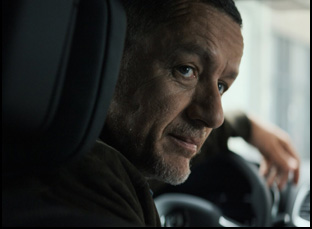
I receive a lot of scripts from France and the U.S. sometimes and most of the time, I don’t feel enough desire, but for this one I remember I was on the train [reading it] and arriving at my destination, I was crying, so I said I have to be honest with myself, feeling my heart and said well “There is something [for me] to do [here].” Then I asked [Cyril Gely, the screenwriter] for the authorization to rewrite the story to my own. I didn’t put a [revamp] the story itself, but I changed things because of my own experience with my mom and I decided to change the songs [in the film to ones] I wanted to listen to — Etta James, Dina Washington — and I changed the end too, but it was a remarkable work at the very beginning, so that’s why I decided for very first time to shoot something I didn’t start to write.
It does connect with a recurring theme in your work of what connects generations whereas most seem to look for conflict between them. Is that something you’ve been conscious of?
When I was born, my mother was rather old for the ’60s — she was 37 [which] was not very young [then], and my friends had younger parents and the relatives of my parents were old, so I grew up with old people and I think it’s why I am so interested in stories between generations. “The Girl from Paris” was my very first movie and that was a relationship between a young lady and an old farmer and when I read the script for “Driving Madeleine,” it’s [the story of] an old lady now, and young people during the past, and even in the cab itself, there are two generations. She says, “You are half of my age” to the driver, and there is a kind of transmission and she gives to him a lesson of life and I do believe generations have to talk to each other, which is not very easy, but when it happens it can be very useful.
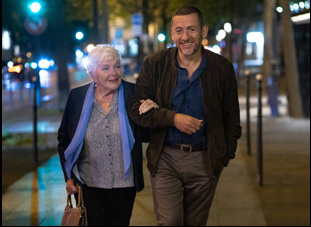
Everybody knows Dany for his comedies as a director or as an actor, but I’ve known him for a very long time and know that he’s a much more complete actor. There are not so many people able to make you laugh or cry and when we were working on “Joyeux Noel,” I remember I told him he was like Bourvil for me, an actor from the past [who is] able to make you laugh very much, but also could be much more dramatic sometimes. And Dany is one of them and twenty years ago for “Joyeux Noel,” he was not very self-confident to play a guy who is dying at the end, but now he is more mature and wants to play [dramatic roles] too, so he was very happy to be with us. And the chemistry between the two actors was magic for me, so I tried to do my best to catch everything and to give you what we felt by shooting the movie.
He and Line Renaud actually have a long history together. Did you immediately think of them when casting this?
They have shot other movies together, but I said to them “You have to forget [that]. This is not the ‘Welcome with English tea’ in a taxi. This is something else.’” And of course they did it and my luck was they really loved the script and wanted to really to do it. We [actually] did it in the order of a story itself. I wanted to keep the last moment when they arrive [at their final destination] for the very last day of the schedule, to keep that moment as fresh as I could. We didn’t shoot [scenes] many times, maybe two or three [times] and nothing more because at the very beginning the first shot was [usually] so special and so moving. We’d only do another one for technical problems, but everything was there because they were waiting for it.
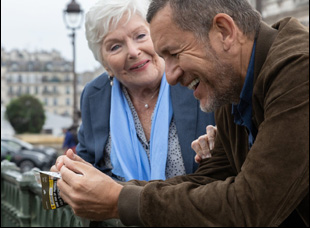
We decided to shoot in a in a studio. Line was 93, so I said to my crew we’ll never shoot in Paris with her because it will be a nightmare, so we recreated the landscapes of Paris around the car with big screens. Three months before [the main production], we really drove around Paris and we shot everything of the streets, even the sky, and after that it was a lot of work in editing to keep the best pictures and screen them on the big screen in the studio [as the backdrop for the car scenes] so for Line and Dany, everything was very comfortable. They didn’t have to think about the real nightmare of driving in Paris. They were just focused on what they had to play and for the crew, it was more comfortable. I love the result because we’ve screened “Driving Madeleine” everywhere and no one really knew that we did it this way, so it means it works. As I used to say as directors of cinema, we are liars. We lie but to tell our truth.
Whether it’s a technical trick like that or something different like working on a script you didn’t write or on your last project, a remake of your own film “Our Son,” where you created an X factor by not giving your lead James McAvoy a script, but only character background before plunging him into the role, it seems you like to challenge yourself. Does that keep things fresh for you?
Yeah, I need to be very, very excited because if I’m not, it will be very boring. For each one of these movies, I had a very deep and serious reason to do it and with “Driving Madeline,” I lost my mom two years before, so that’s why when I read the script, I was so moved. I had to do it, not only for my mom, but for this generation of women who are going and and Line is now 95 and she’s still with us and I’m very proud of what she did, and I know for Dany, this movie is one of his most important in his career [because of] her. It’s a kind of gift for her and I’m very proud of this.
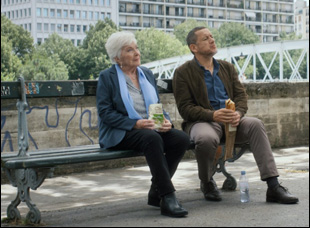
It was just by chance it happened this day, and she said to me “Well, this is a gift now. You will [take me] to this hospital and maybe I have to stay there.” [laughs] And I said, “No, you will not have to stay there,” but the emotion was so high in this moment when they leave each other and they say goodbye, so when we stopped at the end of the day, we had a huge party with a lot of champagne to celebrate Line’s birthday and to celebrate the end of shooting the movie itself. We were on the boats on the Seine in Paris all alone with all the crew and it was a very great important and emotional moment for all of us.
“Driving Madeleine” opens on January 12th in Los Angeles at the Landmark Pasadena Playhouse, the Landmark Sunset 5 and the Laemmle Encino Town Center and New York at the Quad Cinema before expanding across the country. A full list of theaters and dates is here.




